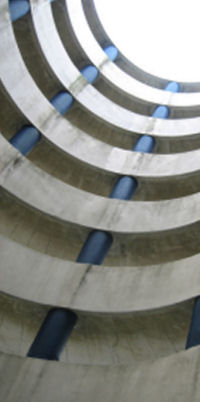|
Property CycleLike any asset class property will boom and bust over typically a seven (to ten) year cycle. If we pick it up in the mid cycle it goes something like this: 1. Demand and supply are evenly balanced. Asking prices are realistic, the average length of time from offer to completion is perhaps 3 months, interest rates are at an 'affordable' level and the market is orderly and people can buy and sell without too much stress. 2. Given the orderliness of the market, prices start to creep upwards, perhaps the interest rate comes down a notch and people begin to feel good about their perceived increasing wealth. Offers are being accepted more quickly and the increase in property activity continues to build. 4. Crunch time. Something's happened. Interest rates have gone up and suddenly all the investors have stopped talking about their profits - to be replaced by a stony silence or a grim retort - something like 'well it's gone up 20%, what do you expect?' Affordability at the height of the market gets to about 5 to 6 times average annual salary, leaving no buyers at the bottom of the market. Valuers can't value the property at the prices that recent buyers have paid and those hoping to sell find themselves playing the equivalent of musical chairs with their investments - there's no one to sell to for that money, unless they either hold and wait or they need to sell in which case they have to reduce the price. It's supply and demand. 5. Prices drop, affordability improves, and interest rates may eventually come down to the level where buyers start going back in to the market. It may be that perhaps prices don't drop significantly but just don't increase - they plateau. What might be happening is that interest rates hold the economy in check and this creates a backdrop of non affordability for new buyers till the rates go down. Central banks know what's happening and will dictate the rates. It is at this time that rents increase as interest rates make mortgages more expensive and these costs get passed on to the tenant. 6. Affordability is back, interest rates have come down, sales have started again and we're now probably at the bottom of the property cycle but everything is a little more expensive: What's happened is that as rents have increased, so the price of the property and yield has increased, so that when, the market returns to a 'normal' state, landlords have an above average yield. The landlord will then remortgage as he'll be able to afford the new mortgage payments and perhaps invest again, perpetuating the cycle. Return from Property Cycle to House Prices
|




